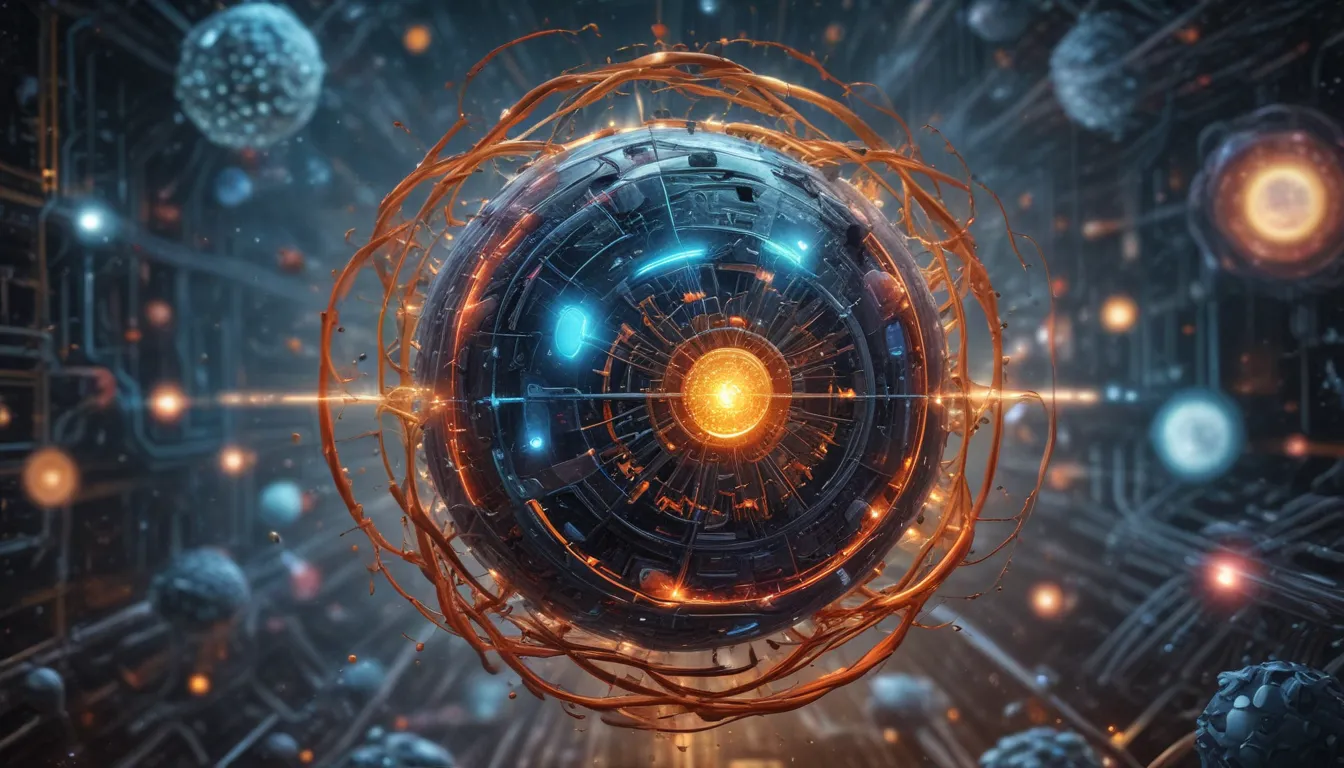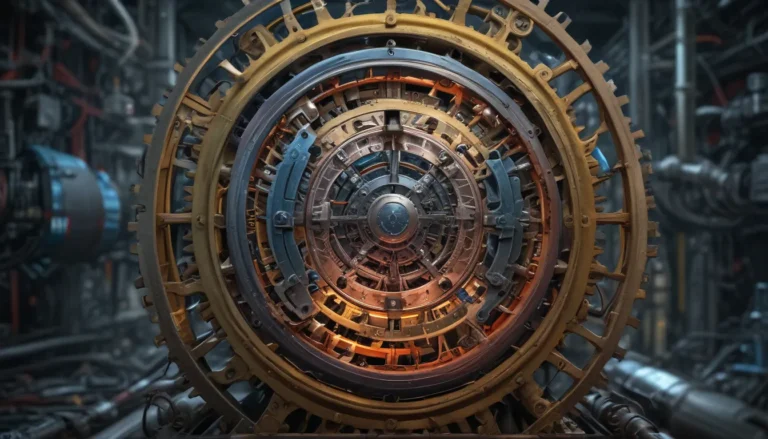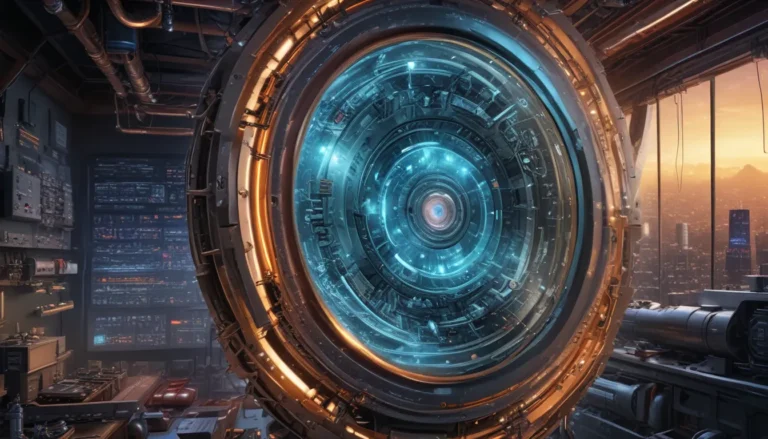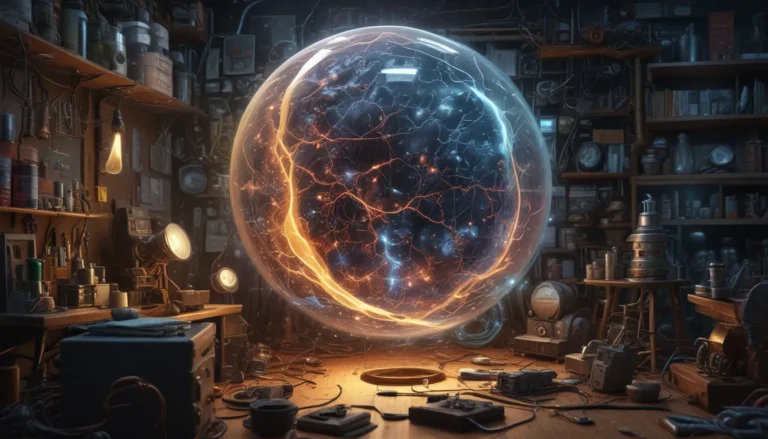A Note About Images: The images used in our articles are for illustration purposes only and may not exactly match the content. They are meant to engage readers, but the text should be relied upon for accurate information.
Have you ever wondered about the mysterious forces that hold the universe together at the tiniest scales? Quantum Chromodynamics (QCD) is a captivating realm within particle physics that unveils the secrets of the strong nuclear force, binding the building blocks of matter – protons and neutrons. Despite its apparent complexity, QCD offers profound insights into the essence of the universe and the behavior of subatomic particles.
Unveiling Intriguing Facts About Quantum Chromodynamics
Let’s embark on a fascinating journey through the realm of Quantum Chromodynamics and uncover astounding revelations about the dance of quarks, the strength of gluons, and the creation of matter from energy. These captivating facts will illuminate the intricate workings of the subatomic world, leaving you in awe of the mysteries that lie within.
The Mighty Force of Quantum Chromodynamics
At the heart of Quantum Chromodynamics lies the strongest force known to nature – the strong nuclear force. This force holds atomic nuclei together and governs the interactions between quarks and gluons, the fundamental particles of QCD. Through the lens of QCD, we gain a deeper understanding of the behavior of matter in the early universe and the forces that shape our world.
Gluons: The Colorful Messengers
In the realm of QCD, the interplay between quarks is orchestrated by gluons, massless particles that carry the color charge – a unique property defining the strong force. Gluons facilitate the exchange of energy and momentum between quarks, enabling the formation of protons, neutrons, and a myriad of composite particles that populate the subatomic landscape.
The Six Flavors of Quarks
According to the framework of QCD, there exist six distinct types of quarks, each endowed with unique properties and characteristics. From the familiar up and down quarks to the exotic top and bottom quarks, these flavors combine in intricate ways to give rise to the diverse array of particles that make up the fabric of the universe.
Pioneering Discoveries: Asymptotic Freedom and Quark Confinement
A pivotal breakthrough in QCD came in the form of asymptotic freedom, a concept that revolutionized our understanding of quark behavior at high energies. This remarkable discovery, along with the phenomenon of quark confinement, where isolated quarks are forever bound within particles, showcases the intricate balance of forces at play in the subatomic realm.
Lattice QCD and Supercomputing Marvels
Simulating the complex interactions of QCD requires innovative approaches like lattice QCD, a method that discretizes spacetime to capture the intricate dynamics of quarks and gluons. These calculations demand the immense computational power of supercomputers, enabling physicists to unravel the mysteries of QCD with unprecedented precision.
The Energetic Vacuum of QCD
Contrary to popular belief, the vacuum of QCD is teeming with activity, as fluctuations in the gluon field fill this seemingly empty space with energy. These fluctuations, known as the strong CP problem, play a vital role in shaping the behavior of particles and add a layer of complexity to the enigmatic nature of QCD.
Delving into QCD Phase Transitions
At extreme temperatures or densities, QCD undergoes a phase transition akin to the boiling of water, where quarks and gluons exist in a liberated state known as the quark-gluon plasma. Understanding this transition is pivotal in unraveling the mysteries of the early universe and shedding light on the fundamental forces that shaped our cosmic landscape.
QCD: Illuminating the Path for Particle Colliders
From the iconic Large Hadron Collider (LHC) to cutting-edge research facilities, QCD serves as a cornerstone in the study of high-energy collisions and the exploration of fundamental particles. By probing the interactions of quarks and gluons, scientists have made groundbreaking discoveries, including the elusive Higgs boson, pushing the boundaries of our understanding of the universe.
Embracing the Enigmatic World of Quantum Chromodynamics
As we marvel at the wonders of Quantum Chromodynamics and its profound implications for our understanding of the universe, we are reminded of the endless possibilities that lie within the realm of particle physics. The captivating dance of quarks, the vibrant interactions of gluons, and the intricate symphony of forces that govern the subatomic world all beckon us to delve deeper into the mysteries that await our exploration.
Conclusion
Quantum Chromodynamics stands as a testament to humanity’s insatiable curiosity and quest for knowledge, shedding light on the fundamental forces that shape the cosmos. As we navigate the complexities of QCD and unearth its mind-boggling revelations, we come one step closer to unraveling the mysteries of the universe and unlocking the secrets of the quantum realm. Let the captivating journey through the realm of Quantum Chromodynamics inspire you to embrace the wonders of particle physics and ignite a passion for unraveling the mysteries that lie beyond.
FAQs
-
What is Quantum Chromodynamics (QCD)?
Quantum Chromodynamics is a field of physics that explores the behavior of subatomic particles called quarks and the strong nuclear force that binds them together. -
What is the strong nuclear force?
The strong nuclear force is one of the fundamental forces of nature that holds atomic nuclei together by binding quarks to form protons and neutrons. -
What is asymptotic freedom?
Asymptotic freedom is a concept in QCD where quarks behave as if they are weakly interacting at high energies, revolutionizing our understanding of their behavior. -
What is color confinement?
Color confinement in QCD explains why individual quarks are never observed in isolation and are instead confined within composite particles known as hadrons due to the strong nuclear force. -
How does QCD contribute to our understanding of the early universe?
QCD predicts a phase transition in the early universe where quarks and gluons are liberated from hadrons, forming a quark-gluon plasma and shaping the evolution of the cosmos.
Delve into the mesmerizing world of Quantum Chromodynamics and unlock the secrets of the subatomic realm, where quarks and gluons dance to the tune of the strongest force in nature. Let the captivating allure of QCD beckon you to explore the mysteries that lie within and embark on a journey of discovery that transcends the boundaries of our understanding. Join us on this extraordinary quest to unravel the enigmatic tapestry of the universe and marvel at the wonders of Quantum Chromodynamics.






